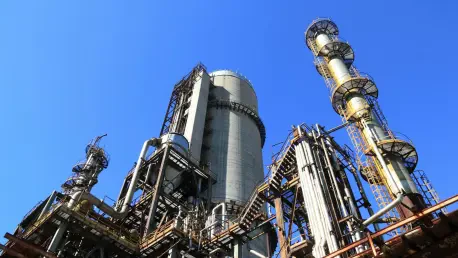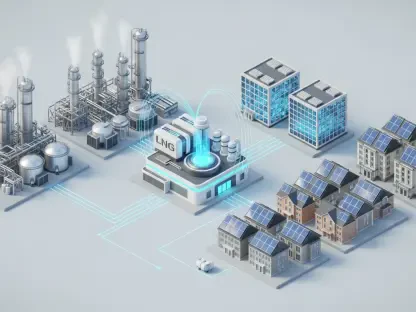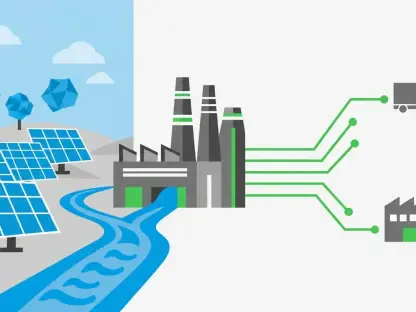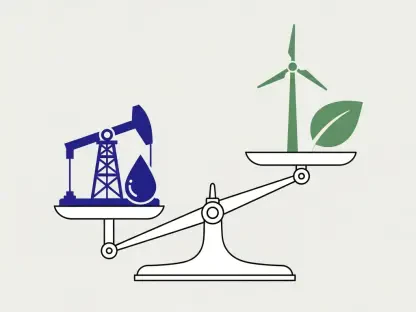As the global energy landscape undergoes a profound transformation, manufacturers in North America and Europe face diverging paths in their power choices, with significant implications for their future competitiveness. Today, we’re thrilled to speak with Christopher Hailstone, a renowned expert in energy management and renewable energy. With deep expertise in electricity delivery and grid reliability, Christopher offers invaluable insights into how these energy transitions are reshaping industrial landscapes across the Atlantic.
Can you start by explaining what the ‘energy transition’ means for manufacturers in North America and Europe, and how it differs between the two regions?
Absolutely. The energy transition, at its core, refers to the shift from traditional fossil fuel-based energy systems to more sustainable and often cleaner sources of power. For manufacturers in North America, this transition is slower and heavily tied to natural gas, which remains the dominant power source due to the region’s vast domestic reserves. In Europe, however, the transition is more aggressive, with a clear pivot toward electrification—factories are increasingly moving to electricity as their primary energy source. The key difference lies in the drivers: North America benefits from self-sufficiency in gas, while Europe is motivated by a need to reduce reliance on imported fossil fuels, especially after geopolitical disruptions like the 2022 Russia-Ukraine conflict.
What’s behind North America’s continued reliance on natural gas as the main power source for factories?
It largely comes down to geology and economics. North America sits on massive gas deposits, making it not only self-sufficient but also the world’s leading exporter of liquefied natural gas. This abundance keeps gas prices relatively low compared to electricity, which has seen sharper price increases in recent years. For manufacturers, it’s a practical choice—gas is reliable, affordable, and the infrastructure is already in place. It’s a stable foundation for industrial power needs, at least for now.
Switching to Europe, what’s driving the strong push toward electrification of factories there?
Europe’s shift to electricity is driven by a mix of necessity and policy. The region imports over half of its natural gas, leaving it vulnerable to supply disruptions and price spikes, as we saw after Russia’s invasion of Ukraine in 2022. That event was a wake-up call, accelerating efforts to cut dependence on imported gas. On top of that, Europe has implemented strong policies promoting energy efficiency and renewable energy integration, which further incentivize electrification. Electricity, while still costly, has become relatively cheaper than gas in many European markets, making it a more attractive option for manufacturers.
Let’s dive into the price dynamics. How have electricity and gas prices evolved recently in North America, and how do they compare to Europe?
In North America, electricity prices have risen significantly—about 40% higher in 2025 compared to the 2010-2020 average. Meanwhile, natural gas prices have increased by a much smaller margin, around 12% over the same period. This gap reinforces the preference for gas among manufacturers. In Europe, the story is quite different. Electricity prices, while high—averaging 50% above the 2010-2020 benchmark in places like Germany—are still outpaced by gas price surges, which are up over 90%. So, even though electricity isn’t cheap in Europe, the relative cost of gas has pushed manufacturers toward electrification. Compared to the U.S., Europe’s electricity prices are about 2.4 times higher, and gas prices are over 5 times higher, creating very different economic pressures.
Looking ahead to 2050, why do you expect European manufacturers to use significantly more electricity than their North American counterparts?
The divergence is rooted in long-term trends and policy commitments. By 2050, forecasts suggest that nearly half—around 48%—of European manufacturers will be powered by electricity, compared to just 34% in North America. Europe’s aggressive electrification is fueled by mandates to cut greenhouse gas emissions and reduce fossil fuel imports, alongside investments in renewable energy. In contrast, North America’s reliance on gas is expected to hold steady, with about 46% of manufacturers still using it as their primary source. The gap grows because Europe is actively phasing out gas—only 11% of its factories are projected to use it by mid-century—while North America lacks the same urgency or policy push to pivot away from gas.
What risks do North American manufacturers face by sticking with natural gas as their primary energy source?
There are a few notable risks. First, the growing demand for liquefied natural gas exports could tighten domestic supply and drive up prices, putting pressure on manufacturers who rely on affordable gas. Second, if renewable energy or nuclear power continues to scale up and drive down electricity costs, gas-dependent factories might lose their competitive edge. They could find themselves locked into a more expensive energy model while competitors who’ve switched to electricity benefit from lower operational costs. It’s a gamble on gas prices staying favorable long-term.
On the flip side, what challenges might European manufacturers encounter as they lean more heavily on electricity?
Electrification brings its own set of hurdles. Price volatility in electricity markets is a big concern—sudden spikes can hit manufacturers hard, especially in regions with aging grid infrastructure. Power outages are another risk; if the grid isn’t upgraded to handle increased demand, reliability could suffer. Additionally, the massive investments needed for grid modernization will likely lead to sustained rate hikes for electricity users. This could squeeze manufacturer margins over the coming years, even as they move away from expensive gas.
What’s your forecast for the energy transition’s impact on the competitiveness of manufacturers in North America and Europe over the next few decades?
I think we’re heading toward a landscape where competitiveness will hinge on energy costs and adaptability. In North America, sticking with gas might keep costs low in the short term, but if export demand or global market shifts push prices up, manufacturers could struggle. In Europe, electrification offers long-term sustainability but comes with upfront costs and risks of price swings or grid issues. Ultimately, the winners will be those who can balance energy affordability with flexibility—whether that’s through hybrid systems, energy efficiency, or strategic investments in renewables. Consumers, who often prioritize price over production methods, will likely have the final say, potentially favoring lower-cost producers regardless of where they’re based or how they’re powered.









